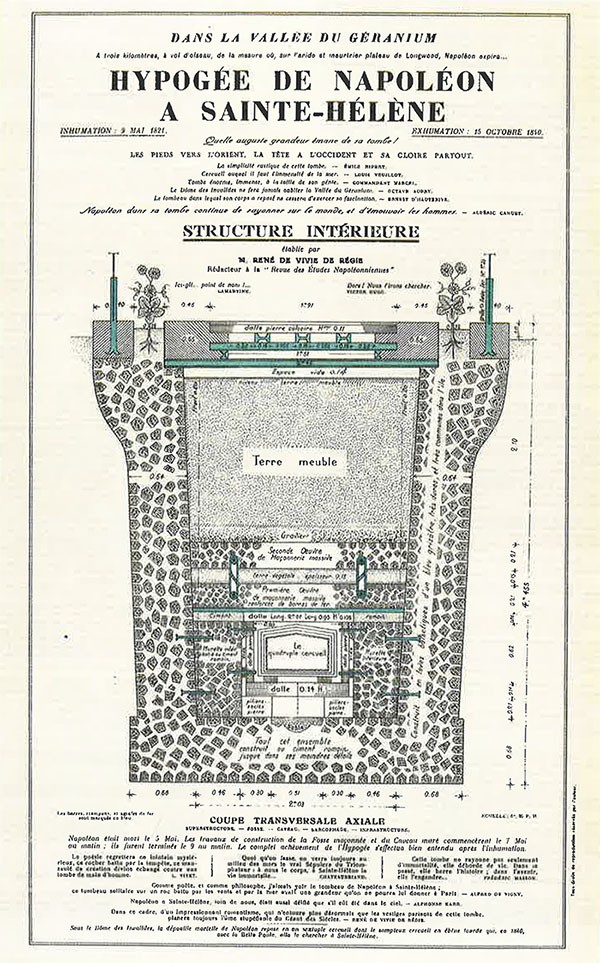The grave was formed in the following manner –
A large pit was sunk of a sufficient width all round, to admit of a wall two feet thick of solid masonry, being constructed on each side; thus, forming an exact oblong, the hollow space within which was precisely twelve feet deep – near eight long and five wide. A bed of masonry was at the bottom. Upon this foundation, supported by 8 square stones each a foot in height, there was laid a slab of white stone, five inches thick; four other slabs of the same thickness closed the sides and ends, which being joined at the angles by Roman cement, formed a species of stone grave or sarcophagus. This was just of depth sufficient to admit the coffin being placed within it. Another large slab of white stone which was supported on one side by two pullies, was let down upon the grave, after the coffin had been put into it, and every interstice afterwards filled with stone and Roman cement. Above the slab of white stone which formed the cover of the grave, two layers of masonry, strongly cemented, and even cramped together, were built in, so as to unite with the two-foot wall which supported the earth on each side, and the vacant space between this last work of masonry and the surface of the ground, being about eight feet in depth, was afterwards filled up with earth. The whole was then covered in a little above the level of the ground, with another bed of flat stones, whose external surface extending to the brink of the two-foot wall on each side of the grave, covers a space of twelve feet long and nine feet wide.
*held at the British Library Mss Add 20133 Fol 200 r.v


